Introduction
You may be asking, “What are word families?”. I’m here to answer your question as well as why teach word families and their importance to literacy success. I will also give suggestions on how to practice word families in your classroom.
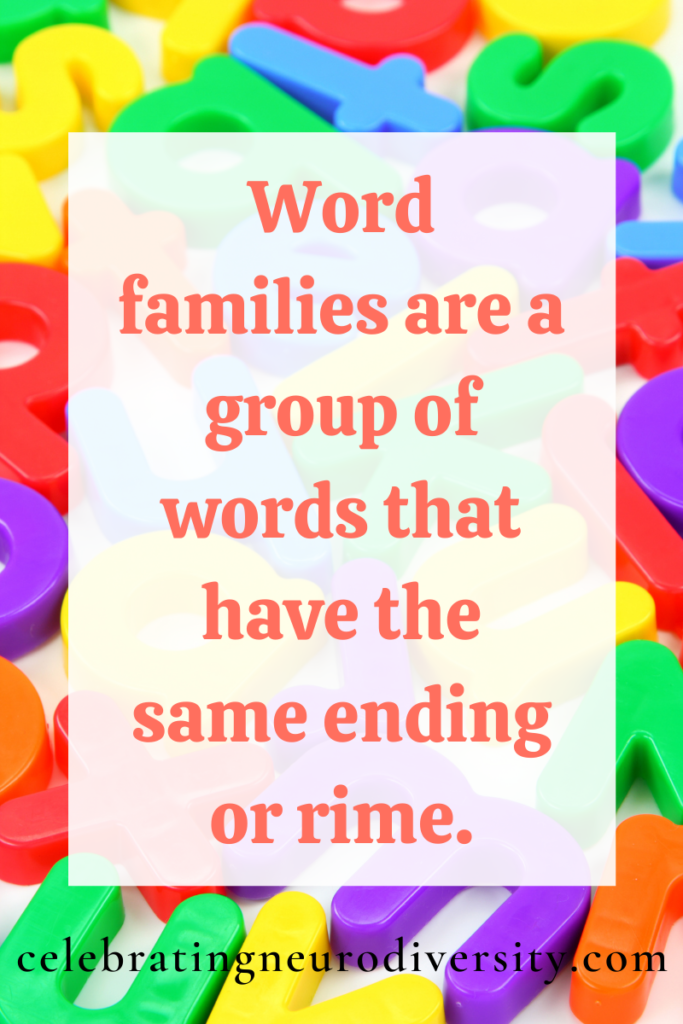
What are Word Families?
Word families are a group of words that have the same ending or rime. The rime is the vowel and consonant(s) that come after it. For example, word family ig would include pig, dig, wig, and twig. They all have the same ending or rime but the onset or initial sound of the words are different. They are sometimes called chunks, rime, rime units or phonograms.
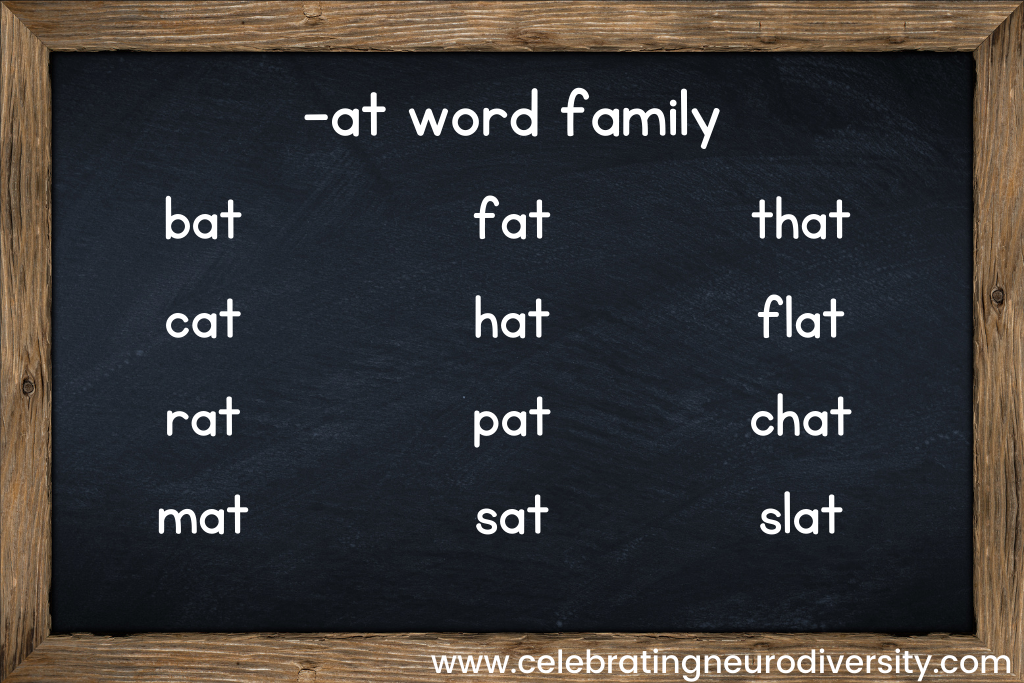
Common Word Families
According to the National Council of Teachers of English, there are 37 common word families. These include ack, ain, ake, ale, all, ame, an, ank, ap, ash, at, ate, aw, ay, eat, ell, est, ice, ick, ide, ight, ill, in, ine, ing, ink, ip, it, ock, oke, op, ore, ot, uck ,ug, ump, unk. Once students are familiar with these patterns they will be able to read and spell over 500 words. Are you looking for word lists for each of these word chunks? I’ve got you covered!
Word Lists
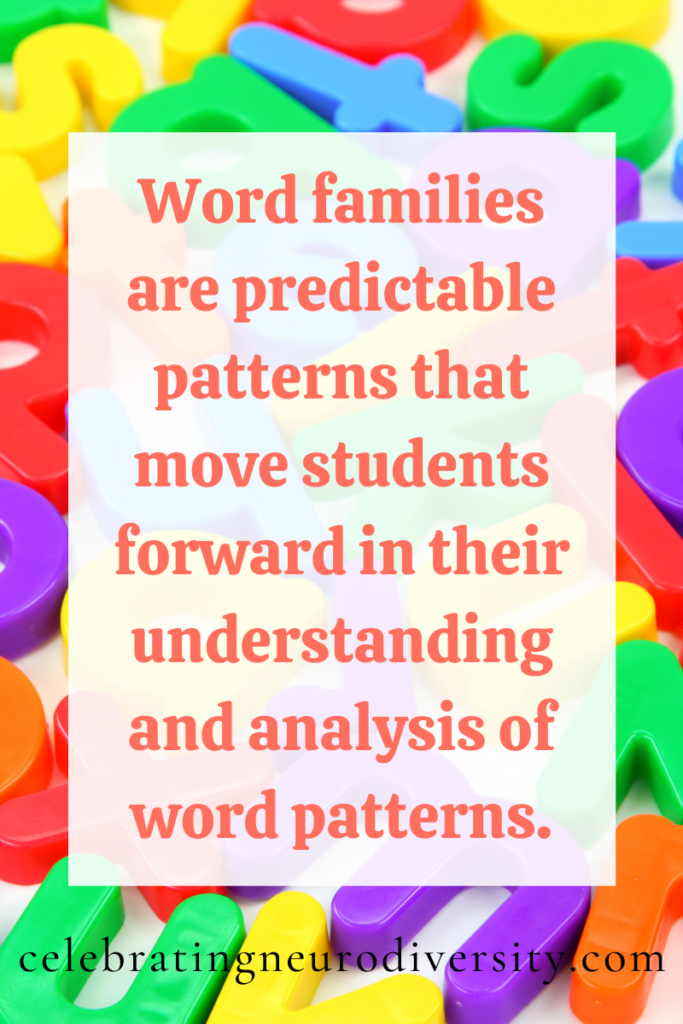
Why are Word Families Important?
Have you ever had a student that can read a word one day but not the next? Or even read a word on one page and not know it on the next? I have had many students with this problem. What is going on?
Permanent Storage of Words
The problem is that the student has not permanently stored the word or word family to their memory. Phoneme awareness and phonics are critical to get words in permanent storage. Familiar letter strings, letters in a meaningful order, like word families, once remembered, are stored together as units in the brain.
Word Patterns
Students must understand the relationship between phonemes heard and letter sequences in print. Word families are predictable patterns that move students forward in their understanding and analysis of word patterns. Studies show that children can identify words that share a rime unit more quickly than words with different rime units. Rime units help build fluency at the early levels but continue to support readers as they move into multi-syllabic words. Knowledge of word families helps students build confidence and reading success.
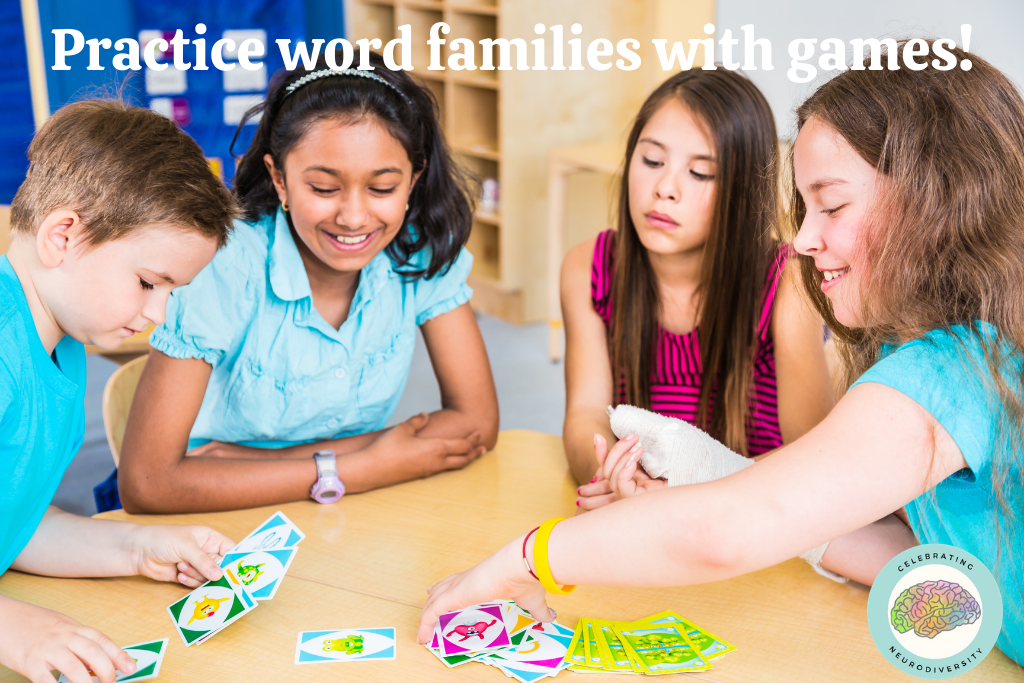
Using Word Families in the Classroom
Word families can be introduced in kindergarten. Consonant, vowel, consonant rimes are perfect for the second semester of kindergarten. Harder rimes can be learned in first, second, and third grade. Students should be explicitly taught these patterns.
Word Wall
Once introduced, a word wall of word families or a chart can be created as a resource for students in the classroom.
Games
Word family games are another way to reinforce explicit instruction and a great way to sneak in additional practice and review. Games are personally my favorite way to review taught skills. Repetition will help students strengthen neural pathways and help the child to permanently store the word or word family to their memory. I have created some fun games that are on my Teachers Pay Teachers shop to help students advance their reading success with the use of word families. If you sign up using the link on the right of this page, you will receive a short vowel A word family game straight to your e-mail for FREE. You will also receive teaching tips, special offers, and more freebies right to your inbox.
Word families play an important role in literacy development and should be taught in classrooms as early as kindergarten. Word families are a group of words that have the same ending or rime. They help students understand and analyze word patterns. I hope I was able to answer your question “what are word families?”
Here are other resources you may like on word families!
Meet the Word Families- Reading Rocket
Teacher Ideas & Activities: Word Families- The Mailbox
Celebrating Neurodiversity Resources
A few more for you!
Easy DIY Bulletin Board Ideas That Could Change Your Student’s Life!
How to be Successful and Communicate Effectively with Parents on Facebook
5 Important Book Categories for Classroom Library and Why Kids Need Them
5 Powerful, Easy Tips for Teaching the Stock Market for Kids
5 Best ESL Strategies to plan for BEFORE the school year starts

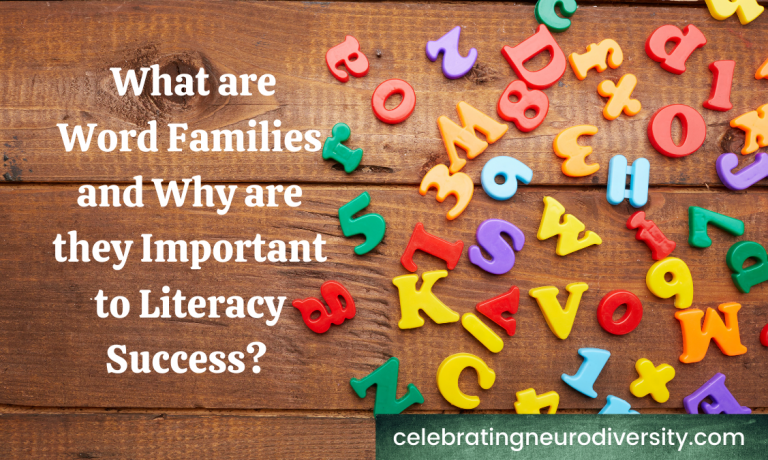


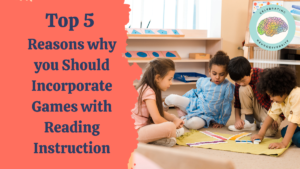
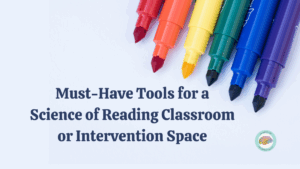
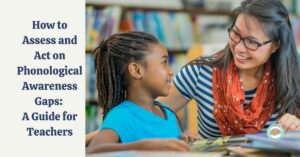
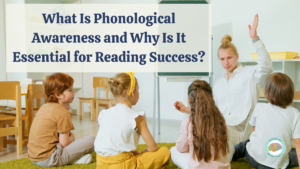

3 Responses